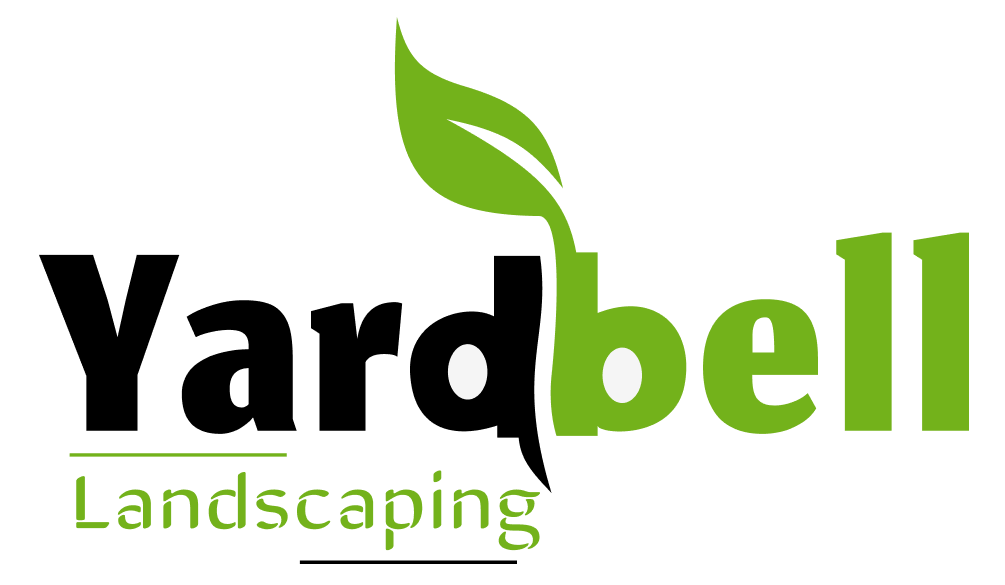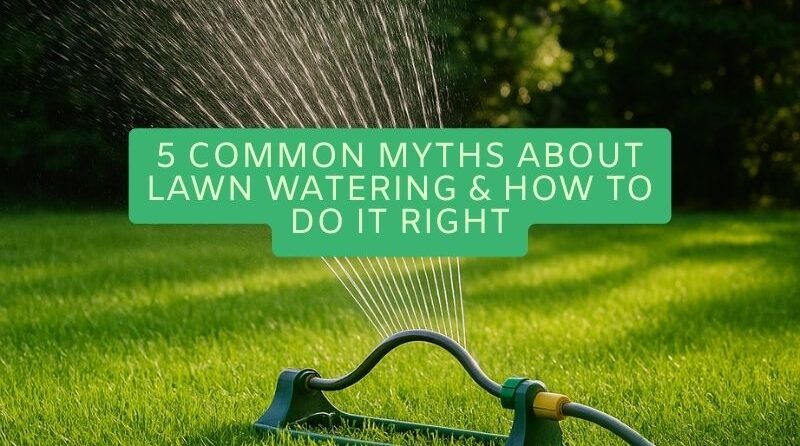When it comes to watering lawns, homeowners often get it wrong—leading to brown patches, diseases, or wasted water. Whether you’re scheduling regular lawn mowing and trimming, installing fresh sod, or simply trying to grow greener grass, proper watering is the foundation of a healthy yard.
Let’s clear the air by busting five common lawn watering myths—and sharing the right way to care for your turf, straight from the pros at your local lawn maintenance and landscaping team.
Myth #1: “I Don’t Have to Water My Lawn – Rain Is Enough”
Rainfall helps, but it’s rarely consistent enough to keep your lawn lush and green. During dry spells, grass can weaken and make room for weeds. Even after services like core aeration, fertilization, or overseeding, skipping watering will limit their impact.
Pro Tip: Water your lawn 2–3 times a week to deliver 1–2 inches of water. Use a rain gauge or even a tuna can to measure sprinkler output.
Myth #2: “I Just Water Based on the Season”
The weather doesn’t follow a strict schedule, and neither should your watering. A dry spring could mean more water than a wet summer. Freshly laid turf, especially after residential sod installation, requires close attention to stay hydrated and take root.
Pro Tip: Check the soil moisture a few inches down. If it’s dry, water. If it’s damp, hold off.
Myth #3: “It’s Best to Water in the Evening”
Evening watering might sound convenient, but it traps moisture on the blades overnight, increasing the risk of disease. Watering early in the morning, just after sunrise, is best—it allows your lawn to absorb water and dry out during the day.
Pro Tip: If mornings aren’t possible, mid-day is your next best bet—just be aware of evaporation.
Myth #4: “Hand Watering Works Best”
Hand watering can lead to uneven distribution, overwatering in spots, and runoff in others. A better approach is to use sprinklers or in-ground irrigation systems, which provide a slow, steady soak. This is especially important after services like detaching, landscape bed maintenance, or rototilling, when consistent hydration supports recovery and growth.
Myth #5: “Underwatering is Worse than Overwatering”
Overwatering can be just as harmful—if not more. It can lead to root rot, pest problems, and fungus. Just like tree cutting and pruning require skill and balance, your watering should too.
Pro Tip: Stick to the golden rule—1–2 inches per week, including rainfall. Overwatered lawns feel soggy underfoot and often show yellowing patches.
Watering Right Means a Healthier Lawn All Year
Proper watering supports every service you invest in—whether it’s property cleanup, sod rip-out, hedge trimming, or preparing for winter with snow season prep. Even decorative improvements like rock and mulch landscaping benefit when your lawn’s hydration is on point.
Final Word from Your Local Lawn Experts
At YardBell, we see lawn care as a partnership. From fabric installation to aeration, fertilization, and tree service, we handle the heavy lifting—while your watering habits keep everything thriving.


